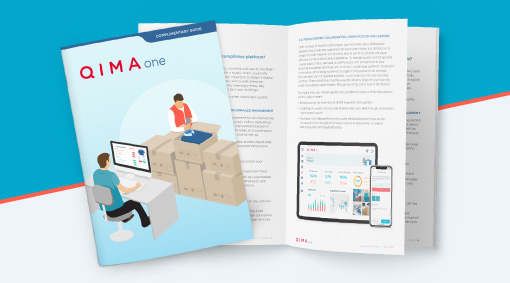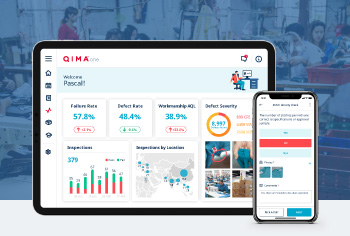
Articles
Corrective Action Plans 101: Your Basic Guide to Ensuring Supply Chain Quality Excellence

Articles
Corrective Action Plans 101: Your Basic Guide to Ensuring Supply Chain Quality Excellence
Articles
Corrective Action Plans 101: Your Basic Guide to Ensuring Supply Chain Quality Excellence

Keep up-to-date with the latest supply chain insights.
In a perfect world, products would roll off assembly lines exactly as they should. But assembly lines don’t always supply perfect products. When Quality falls short of excellence, smart managers turn to Corrective Action Plans.
Corrective Action Plans are useful tools that form a bridge between Quality Control, which is often reactive in response to problems and mistakes, and the more proactive efforts of Quality Assurance, which works to prevent mistakes before they occur.
In this article, we explore the basics of Corrective Action Plans, including explaining why they are so important, offering recommendations for building your own and giving guidance for implementing a CAP effectively.
Key Learnings
When you’ve finished this article, you’ll understand:
- The impact of Corrective Action Plans in your overall Quality Excellence strategy
- Common components of successful Corrective Action Plans
- The advantages of using Corrective Action Plans with your suppliers
- How to correctly implement a Corrective Action Plan
How can Corrective Action Plans Impact Quality Excellence?
The International Standard for a Quality Management System, ISO 9001, defines Corrective Action as "any action taken to mitigate the cause and effects of a problem to prevent its recurrence."
A Corrective Action Plan is part of the collection of tools that supply chain and quality assurance managers should use to identify the root cause of a problem, trigger actions to prevent its recurrence and eventually ensure the supply chain functions effectively.
Quality Excellence begins with setting the right level of expectations for all stakeholders (vendors, clients, factories, etc.). It’s important to get a full understanding of where your practices stand today if you hope to improve them in the future. To that end, we offer several services that will support Supply Chain and Quality Control Managers in assessing and adjusting their quality expectations, including:
- Compliance audits
- Product and safety inspections
- Testing of products and services
- Sample reviews
When managers receive results that are below their expectations, they must implement Corrective Action Plans, working together with their supplier to address shortcomings as they happen. No one wants to be told the work they’re doing isn’t up to standards, so care must be taken to deliver all CAPs with sensitivity and professionalism. Most suppliers welcome the opportunity to improve, and a CAP gives them a chance to build partnerships and to earn each other’s trust.
There are important elements which must be included to deliver a successful CAP.
Data-driven collaboration
The success of a Corrective Action Plans must be evaluated objectively with KPIs.
The CAP is likely initiated because of measured results failures. Hence, it must be built to drive improvement on these metrics with realistic goals, regularly reviewed and constantly measured. We recommend developing the goals in cooperation with your partners and sharing documentation and KPIs.
Task tracking
Your CAPs must list the steps the stakeholders will take to meet the expectations you aligned together, worded in concrete language with measurable results.
Successful CAPs include a timeline for completing each of the steps and clear directions for reporting results.
Ownership
Finally, each stakeholder should acknowledge that the steps defined in the plans are adequate. All appointed representatives must understand who is responsible for completing each step of the Action Plan.
Perform easy self-inspections
with your factories
Learn more!

Perform easy self-inspections
with your factories
Learn more!
Why do you need a Corrective Action Plan with your suppliers?
CAPs are important to Quality Managers because they help drive alignment with their suppliers toward the quality and performance requirements of their customers.
Importantly, a CAP is a forward-looking document intended to help all parties involved. Quality Managers want suppliers they can rely on long-term, and suppliers want to know they have customers they can count on, too.
When suppliers fail to meet our expectations, nobody wins, but with a Corrective Action Plan, quality improves, and the relationship is strengthened. There are some powerful ways a CAP can benefit you.
Identify root causes
Before a Corrective Action Plan, you will need to identify the root causes of poor quality using a structured approach to problem-solving. This is key to ensure your analysis is deep enough and addressing the right issue.
Then, working on targeted solutions will benefit both sides and improve a supplier’s overall quality and reputation. By fixing the problem at its source, both the supplier and their customer save time and money—a situation that improves everyone’s bottom line.
Empower suppliers
Corrective Action Plans empower suppliers to take control of their quality management. When expected to maintain ownership of their products’ quality, suppliers often go above and beyond our expectations. This is especially true when suppliers know that successful Action Plans are likely to increase the opportunity for continued business.
Additionally, CAPs are often required by industry standards, regulations, and contractual agreements. Failure to implement a CAP can result in financial penalties, legal action, and damage to a supplier's reputation.
Prevent risks and recurring defects
In some cases, CAPs address safety concerns. Successful CAPs protect workers, consumers and the environment by ensuring the production process is being conducted responsibly and products have passed appropriate testing before reaching consumers. Often, the defective products’ return and/or replacement will cost as much as the manufacturing itself, with a major delay in your supply.
Quality-related defects can quickly harm your business in several ways. For example:
- Returning a damaged online purchase can cost the business 17 times more than the original shipping cost.
- Average retailers lose 4% of revenue thanks to damage and return.
- Poor quality costs the average retailer 20% of their sales.
Challenges like these can be tackled with a proactive approach: working on a CAP.
How do you implement a Corrective Action Plan?
The steps involved in implementing a CAP may vary depending on the organization and the nature of the issue, but you will find below some general recommendations that help to make the process smoother.

Use a digital CAP embedded in the inspection reports
Leverage technology to assign Corrective Action Plans in real time as measurements are taken and reports are delivered. The clarity and efficiency of embedded, digital CAPs makes the changes easier and more impactful. That’s a powerful competitive advantage.
Onsite and remote workshops
Without the proper training, Corrective Action Plans are doomed to fail. Be sure your supplier partners are given the proper training to address their quality issues. The best inspection service providers offer a variety of workshop options, including onsite and remote delivery.
5 common mistakes to avoid
When Corrective Action Plans fail, it usually can be attributed to one of these common mistakes:
- Poor Analysis: Be sure you are using accurate, up-to-date data to identify the right root causes. This is the foundation for your CAPs. Wrong or incomplete analysis/data will have you addressing symptoms of problems and not the causes.
- Poor planning: Without proper planning, the CAP is unlikely to succeed. Ensure goals and objectives are clear and resources for making the changes adequate. Monitor the progress in real time and follow up regularly during committee meetings.
- Poor training: Invest the necessary resources in providing training. Without proper training, employees may not be able to effectively carry out their assigned tasks. The result is frustration and failure to achieve the desired results.
- Poor communication: Lack of communication between team members or stakeholders can lead to misunderstandings, delays and confusion. Establish protocols for sharing progress, reports and deadlines.
- Resistance: Because change can be scary, you may encounter resistance to implementing the Corrective Action Plan. Proper articulation of the plan and the stakes can help address misgivings. People tend to be more cooperative when they can see how a plan benefits them and when they understand their role in it.
Thankfully, each of those common mistakes can be avoided with the right attention to process and communication. Implementation of Corrective Action Plans can be the first step toward operating more effectively, more efficiently, and better-delivering value to your customers while establishing a competitive advantage in the marketplace.
How QIMA can help
QIMA has the technology and expertise to be your worldwide global Quality Excellence partner.
We’ve been a global presence in Quality Management since 2005. The first QA service provider to establish an online reservation process, QIMA is a digital native with expertise in CPG and retail TIC.
QIMA operates in 100 countries, serving more than 30,000 global brands across a wide range of products, including softlines, hardlines, food and agriculture. By working as a facilitator between you and your factories, we help identify root causes of poor quality and support implementation of your Corrective Action Plans.
QIMAone can revolutionize how your business manages quality and compliance by providing unprecedented efficiency and transparency for brands and retailers. Real-time monitoring ensures your supply chain remains visible from beginning to end. Embracing this technology will enable companies to provide better quality and service to their customers.
To learn more, or to schedule a consultation with one of our experts, visit our Contact Us page today.
Most Popular Articles
Corrective Action Plans 101: Your Basic Guide to Ensuring Supply Chain Quality Excellence
The Benefits of a Data-Driven Supply Chain
6 Benefits of Supply Chain Visibility
How to Implement a Quality Management System
Simpli Home: Ensuring product quality and compliance with supply chain technology
7 Effective Ways to Improve Your Quality Management System
Supply Chain Visibility: Complete Guide for Supply Chain Managers
Boost Quality Control with Supplier Performance Metrics





